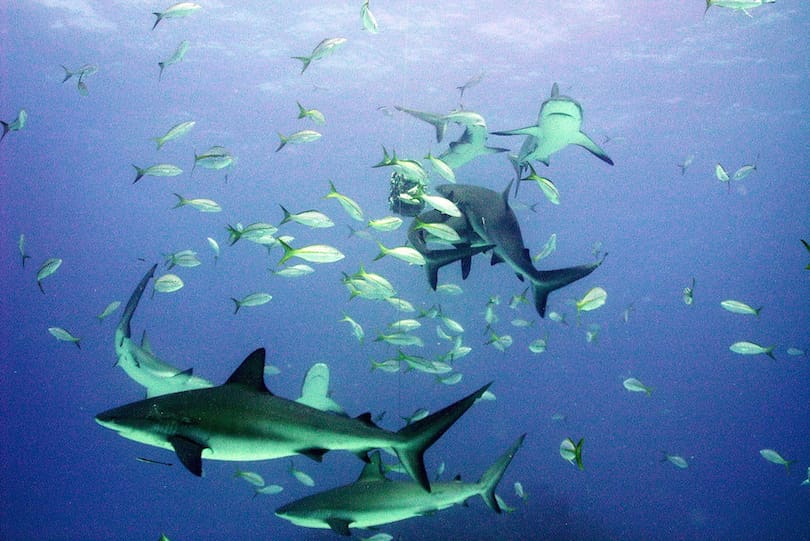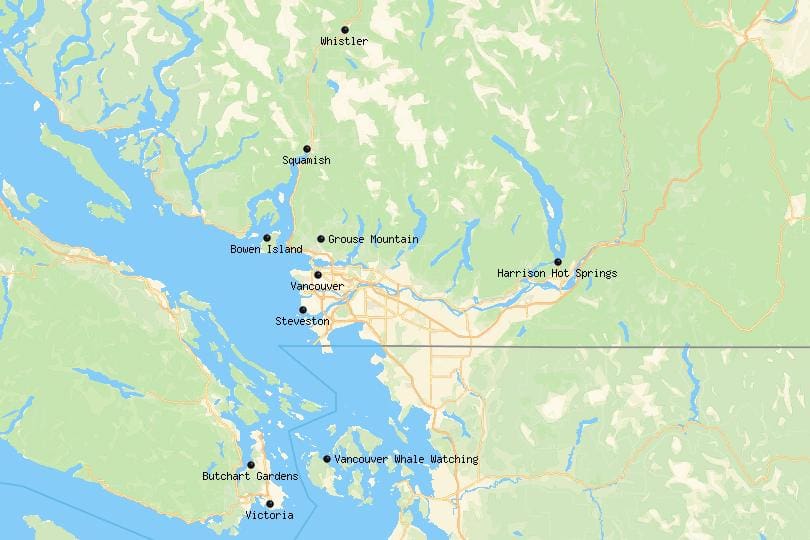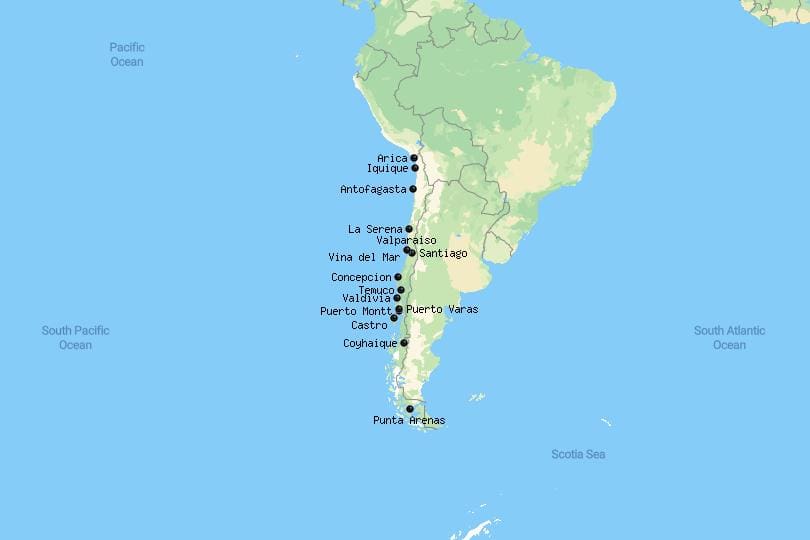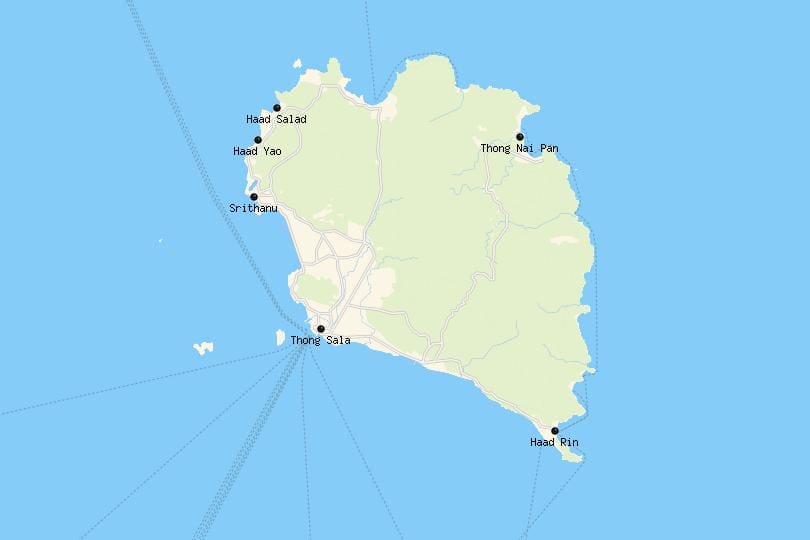Island reefs are some of the most mesmerizing natural wonders in the world. With crystal-clear waters, a vibrant marine ecosystem, and an abundance of colorful fish and corals, they offer a perfect escape for snorkelers and divers alike. In this article, we will explore the 10 best island reefs around the world that should be on every water enthusiast’s bucket list.
Table of Contents
- Introduction
- What are Island Reefs?
- Coral Reefs and their Importance
- Top 10 Island Reefs around the World
- The Great Barrier Reef, Australia
- Raja Ampat Islands, Indonesia
- Maldives, Indian Ocean
- Tubbataha Reef, Philippines
- Maui, Hawaii
- Palau Islands, Micronesia
- Turks and Caicos Islands, Caribbean
- Bonaire, Caribbean
- Fiji, South Pacific
- The Red Sea, Egypt
- How to Choose an Island Reef for Snorkeling or Diving
- Conclusion
- FAQs
Introduction
Island reefs are a paradise for those who love the ocean. These underwater gardens offer breathtaking beauty, teeming with marine life, and vibrant colors that are simply stunning. With so many options to choose from, it can be challenging to decide where to go. In this article, we have compiled a list of the 10 best island reefs around the world, each one unique in its own way and worth exploring for its diverse marine life and stunning underwater landscapes. Whether you are an experienced diver or a beginner snorkeler, these island reefs offer an unforgettable experience.
What are Island Reefs?
Island reefs are shallow-water coral ecosystems that are found around tropical islands and atolls in oceans around the world. They are formed by tiny coral animals called polyps, which live in colonies and secrete a calcium carbonate exoskeleton. These structures build up over time and create the foundation for the diverse and vibrant coral reef ecosystem. Island reefs are home to a wide range of marine life, including fish, sea turtles, sharks, and other fascinating creatures.
Coral Reefs and their Importance
Coral reefs are one of the most important ecosystems on the planet. They are often referred to as the rainforests of the sea because they are home to a diverse array of marine species. Coral reefs provide habitat, shelter, and protection for countless marine organisms, and are a vital food source for many human communities around the world. Additionally, coral reefs help protect coastlines from erosion, and they are a significant tourist attraction, generating billions of dollars in revenue each year.
Top 10 Island Reefs around the World
- The Great Barrier Reef, Australia The Great Barrier Reef is the world’s largest coral reef system and a UNESCO World Heritage Site. It spans over 2,300 kilometers and consists of over 3,000 individual reefs and coral cays. The Great Barrier Reef is home to over 1,500 species of fish, 400 types of coral, and numerous other marine animals. It offers diverse diving and snorkeling opportunities for both beginners and experienced divers.
- Raja Ampat Islands, Indonesia Raja Ampat Islands are an archipelago of over 1,500 small islands located in West Papua, Indonesia. It is known for its stunning underwater scenery, with crystal-clear waters, and diverse marine life. The Raja Ampat Islands are home to over 1,300 species of fish, 600 types of coral, and 700 types of mollusk. It is a popular destination for both snorkelers and divers.
- Maldives, Indian Ocean The Maldives is a small island nation located in the Indian Ocean. It is known for its pristine beaches, turquoise waters, and luxurious resorts. The Maldives is also home to some of the most beautiful coral reefs in the world, offering excellent diving and snorkeling opportunities. The Maldives’ coral reefs are home to over 700 species of fish and 250 types of coral.
- Tubbataha Reef, Philippines Tubbataha Reef is a marine protected area located in the Sulu Sea in the Philippines. It is known for its pristine coral reefs, abundant marine life, and crystal-clear waters. Tubbataha Reef is home to over 600 species of fish, 360 types of coral, and numerous other marine animals. It is a popular destination for experienced divers due to its strong currents.
- Maui, Hawaii Maui is a popular island in Hawaii known for its beautiful beaches, lush green forests, and stunning coral reefs. The coral reefs around Maui are home to over 500 species of fish and numerous other marine animals. They offer excellent snorkeling and diving opportunities for both beginners and experienced divers.
- Palau Islands, Micronesia – The Palau Islands are an archipelago of over 200 small islands located in Micronesia. They are known for their stunning coral reefs, clear waters, and diverse marine life. The Palau Islands are home to over 1,500 species of fish, 700 types of coral, and numerous other sea creatures. The most popular diving spots in Palau include the Blue Corner, German Channel, and Jellyfish Lake. The Blue Corner is known for its strong currents, which attract large schools of fish and other marine life. The German Channel is a popular spot for seeing manta rays, while Jellyfish Lake is famous for its unique ecosystem of non-stinging jellyfish. Palau is also home to a number of World War II shipwrecks, which make for fascinating diving sites.
- Turks and Caicos Islands, Caribbean : The Turks and Caicos Islands are located in the Caribbean and are known for their stunning beaches and clear waters. They are also home to some of the best coral reefs in the world. The islands are surrounded by a barrier reef, which is home to a diverse range of marine life, including turtles, rays, and sharks. The most popular diving spots in the Turks and Caicos Islands include the Columbus Passage, West Caicos, and French Cay. The Columbus Passage is known for its strong currents, which attract large schools of fish, while West Caicos is famous for its beautiful walls and colorful corals. French Cay is a popular spot for seeing eagle rays, nurse sharks, and other large marine creatures.
- Bonaire, Caribbean :- Bonaire is a small island located in the southern Caribbean. It is known for its beautiful beaches and clear waters, as well as its stunning coral reefs. Bonaire is home to over 470 species of fish and 120 types of coral. The island has over 80 dive sites, which are accessible from the shore. The most popular diving spots in Bonaire include the Salt Pier, Hilma Hooker Wreck, and the Invisibles. The Salt Pier is known for its abundant marine life, including schools of tarpon, while the Hilma Hooker Wreck is a popular spot for exploring a sunken ship. The Invisibles is famous for its beautiful corals and sponges, as well as its resident sea horses and frogfish.
- Fiji, South Pacific : Fiji is an island nation located in the South Pacific. It is known for its stunning beaches, lush rainforests, and clear waters. Fiji is also home to some of the best coral reefs in the world. The most popular diving spots in Fiji include the Great Astrolabe Reef, Rainbow Reef, and Beqa Lagoon. The Great Astrolabe Reef is the fourth-largest barrier reef in the world and is home to a diverse range of marine life, including sharks, rays, and turtles. Rainbow Reef is known for its colorful corals and sponges, as well as its resident giant clams. Beqa Lagoon is a popular spot for diving with bull sharks.
- The Red Sea, Egypt : The Red Sea is a seawater inlet located between Asia and Africa. It is known for its clear waters and diverse marine life, making it a popular destination for snorkelers and divers. The Red Sea is home to more than 1,200 species of fish, 44 species of sharks, and over 200 species of hard and soft corals. The most popular diving sites in the Red Sea include Ras Mohammed National Park, Tiran Island, and the Brother Islands. Ras Mohammed National Park is home to a variety of marine species, including barracudas, groupers, and moray eels. Tiran Island is known for its stunning coral formations, and the Brother Islands are a great spot for diving with sharks, including hammerheads and oceanic whitetips.
How to Choose an Island Reef for Snorkeling or Diving
Choosing an island reef for snorkeling or diving can be overwhelming, especially with so many options available. Here are some factors to consider when selecting your destination:
- Marine life: Look for a location that offers a variety of marine species and colorful corals. This can enhance your experience and give you a chance to spot some rare and exotic creatures. Some reefs are home to turtles, manta rays, sharks, and even dolphins, which can make your trip unforgettable.
- Visibility: Clear waters with good visibility can make a significant difference in your experience. It allows you to see more of the reef and the marine life that inhabits it. A clear view also enhances the colors of the corals and fish, making it a more vibrant and immersive experience.
- Accessibility: Consider how easy it is to get to the location and whether it’s suitable for your skill level. Some reefs may be more challenging to reach and require more advanced diving skills, while others may be suitable for beginners and accessible by boat or even by foot.
- Weather: Check the weather conditions before you plan your trip. Some reefs are best visited during certain seasons when the water is calmer and the visibility is at its best.
- Conservation efforts: It’s important to choose a location that prioritizes conservation efforts. Choose a reef that has strict regulations on fishing, pollution, and other human activities that may harm the marine ecosystem.
By considering these factors, you can choose an island reef that will offer you the best experience and help you make unforgettable memories.
Conclusion Island reefs offer a fascinating glimpse into the underwater world, with an abundance of marine life and stunning coral formations. Whether you’re a snorkeler or a diver, there are plenty of options around the world to explore. From the Great Barrier Reef to the Maldives and the Red Sea, the options are endless. By considering the factors we’ve outlined, you can select an island reef that will provide you with an unforgettable experience.
FAQs
- Which island reef is the best for beginners? The Palau Islands in Micronesia are a great option for beginners, with calm waters and shallow reefs that are suitable for snorkeling and diving.
- Are there any island reefs that are suitable for families with kids? Yes, the Turks and Caicos Islands in the Caribbean are a great option for families with kids. The waters are calm and shallow, making it easy for kids to snorkel and explore.
- Can you visit island reefs all year round? It depends on the location. Some reefs are best visited during certain seasons, while others can be visited all year round. It’s important to check the weather conditions before you plan your trip.
- Do you need to be an experienced diver to explore island reefs? No, there are many reefs that are suitable for beginners and offer snorkeling opportunities. However, some reefs may require more advanced diving skills, so it’s important to choose a location that matches your skill level.
- Why is it important to prioritize conservation efforts when choosing an island reef? Conservation efforts are crucial to preserving the delicate marine ecosystem and ensuring that future generations can enjoy the beauty of these natural wonders. By choosing a reef that prioritizes conservation efforts, you’re helping to protect the marine life and habitats that make these locations so special.
Travel Tips for Snorkeling and Diving at Island Reefs Before you embark on your adventure, here are some useful tips to ensure a safe and enjoyable experience:
- Research the location beforehand: Learn about the weather conditions, water temperature, marine life, and any potential hazards or restrictions.
- Choose a reputable operator: Select a tour operator or dive center that has a good reputation and adheres to safety standards.
- Be prepared: Pack sunscreen, a rash guard, a hat, and a water bottle. Bring your own snorkel gear if possible to ensure proper fit and comfort.
- Listen to the briefing: Pay attention to the safety briefing given by your tour operator or dive master. Follow their instructions and guidelines to avoid accidents and protect the marine environment.
- Don’t touch or disturb the marine life: Remember that you are a guest in their habitat. Avoid touching, feeding, or chasing after marine animals, and never break off pieces of coral.
- Be eco-friendly: Dispose of your trash properly and avoid using single-use plastics. Choose eco-friendly products and support sustainable tourism practices.
- Respect local customs and traditions: Learn about the local culture and respect their customs and beliefs.
Tourist Attractions at Island Reefs Apart from snorkeling and diving, island reefs offer other tourist attractions that are worth exploring. Here are some popular activities to try:
- Island hopping: Discover other islands in the vicinity and admire their unique landscapes and cultures.
- Beach activities: Relax on the pristine white-sand beaches and indulge in water sports such as kayaking, stand-up paddleboarding, or windsurfing.
- Nature trails: Take a hike or a guided tour to explore the flora and fauna of the island and its surroundings.
- Cultural experiences: Visit local villages and markets, taste traditional cuisine, and learn about the history and traditions of the region.
- Waterfall tours: Some island reefs have hidden waterfalls that are accessible by hiking or boating. These natural wonders offer a refreshing break from the heat and a spectacular photo opportunity.














